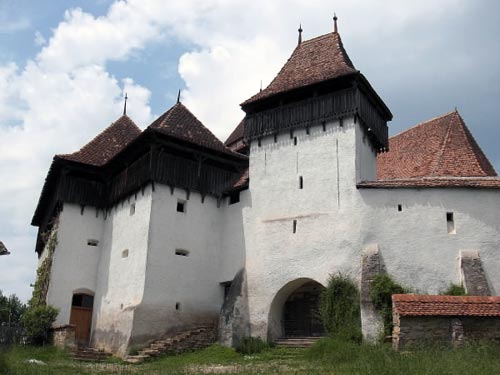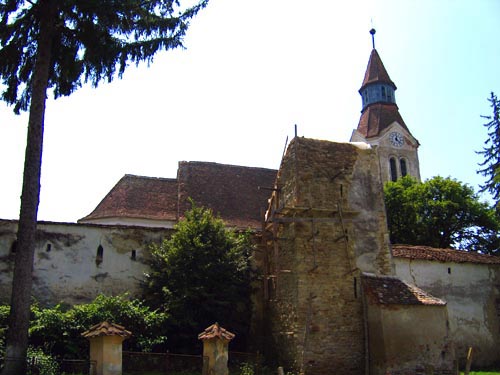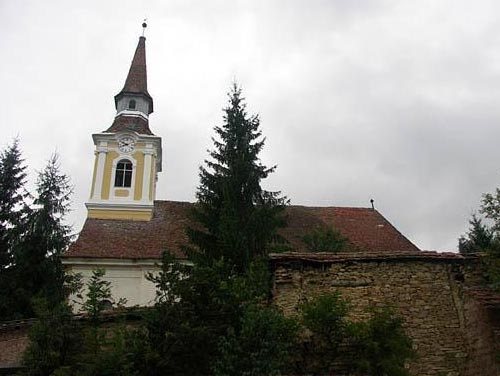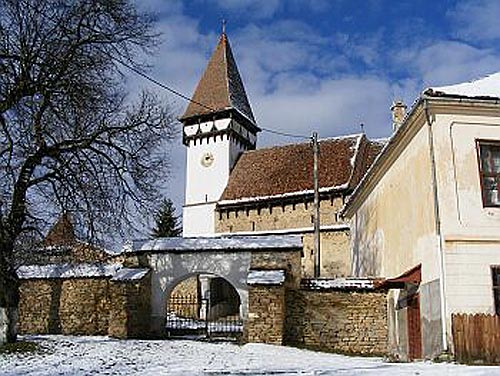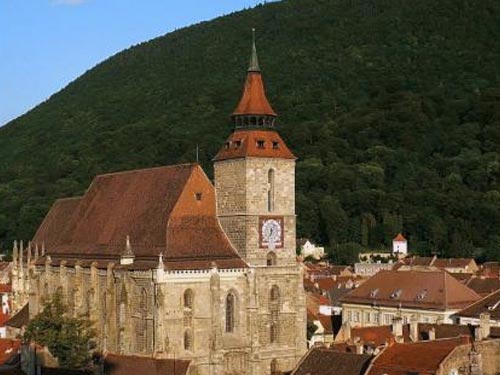Brasov Day Trips / Brasov Day Tours
- Day trip - Castle Tour
- Day trip - Saxon Villages Tour
- Day trip - Medieval UNESCO Tour
- Day trip - Medieval Tour
- Day trip - Fagaras County Tour
- Day trip - Dracula Tour
- Day trip - Fortified Churchies Tour
- Day trip - Transylvanian Alps Tour
- Day trip - Relaxation Tour
- Day trip - Hunyad Castle Tour
- Day trip - Natural Wanders Tour
- Day trip - Explore Transylvania Tour
- Experience wildlife: Bear watching
- Day trip - Saxon Churches Tour
- Day trip - Bran Castle Tour
- Day trip - Peles Castle Tour
- Unforgettable memories: Horse riding
- Adrenalin rush: Paragliding
- Day trip - Airport transfer
BNR Exchange Rate 05.02.2025
Taking a Tour in Brasov...
Search your Brasov Tour
Brasov Day Trip Tours in Transylvania
Fortified Churchies Tour
Tour route:
Brasov - Viscri - Bunesti - Crit - Mesendorf - Brasov
Included in Fortified Churchies Tour:
- pick-up from any address in Brasov - transportation - all entrance fee
Tour duration:
full day
Period:
all year
Brasov tour departure:
9 AM - meeting point or any other address in Brasov
Price:
2 persons 78 €/person 3-4 persons 58 €/person 5-7 persons 48 €/person
Tour photo gallery:
Tour details:
Viscri Fortified Church
Viscri Fortified Church is best known for its highly fortified church, originally built around 1100 AD. The first documentation of Viscri is a record of church taxes dated around 1400, in which the village is referred to as being part of the Rupea parish. It's inhabitants consisted of 51 farmers, 1 school master, 3 shepherds and 2 paupers. Viscri is part of the villages with fortified churches in Transylvania, designated in 1993 as a World Heritage Site by UNESCO.
Around 1185 the church was taken over by Saxon colonists, and the Szecklers were forced to settle in southeast Transylvania. In the 14th century the eastern part of the church was rebuilt and in 1525, the first fortifications with towers were added. In the 18th century the church was surrounded by a second defense wall. After 1743 a covered corridor for the storage of corn was built. A century later, two chambers in the defense corridor of the bastion were turned into school rooms. The classic 19th century altar has as centerpiece "the Blessing of the Children" by the painter J. Paukratz from Rupea. The font was made from a capital of the 13th century church. To this day, the church is surrounded by a cemetery with gravestones dating back to the Bjielo-Brdo culture.
Bunesti Fortified Church
Villages in the Bunesti township are representative for what is understood by rural citadel or fortified church starting with the 13th Century and sometimes even late 12th Century After five, six, seven centuries, these edifices are still standing proof of a unique mode of existence in communities bound around the citadel-church. From the first places of worship in the form of modest wooden constructions, the Saxon colonists started building ever bigger and stronger churches in stone, which, throughout the centuries, helped protect not only small village communities, but the whole of Transylvania from the invading tribes and populations, like the Turks.
Crit Fortified Church
Crit have a fortified church with a well preserved church and perimeter and gatehouse. The church itself was rebuilt in 1810.
The old name Kreuz (cross) comes, by local tradition, from a large cross thrust into a promontory, visible from the nearest villages - Crit, Cloasterf and Mesendorf. Around the cross the first homes were built, as well as a stone church, dedicated to St. Cross.
Inside the new church, built between 1810 and 1813 in the same place as the old one by the same craftsman who built the church of Saes and the bell tower from Danes, on two platforms along the western wall, old church pews, some from the 17th century, are preserved, together with tempera paintings, similar to the ones from Cloasterf.
Mesendorf Fortified Church
Mesendorf was first mentioned in historical document in 1289. In 1469 the village was destroyed in a fire and again in 1641, 1755 and 1804. Despite this it retains its original layout.
The fortified church was first built in the 14th century and was a very simple early Gothic building. A high sandstone wall, a defence corridor and two three-storied defence towers as well as a steep pyramidal roof were built in 1495. Restoration works were begun in 1701, and in 1888 parts of the circular outside wall and of the inside wall tower were taken down.
The triptych altar has two mobile and two fixed wings, made after the model of an old altar. The altar panels represent biblical scenes. In 1923 Hans Hermann renovated the altar and painted four new images representing four apostles. The 1765 organ was replaced by a new one in the 1920's.
The view from the church tower in Mesendorf is one of the highlights of a visit to Tarnava Mare. It gives a very clear understanding of the layout of the Saxon villages and stunning views of the surrounding countryside.
Reccommended day trip tours from Brasov




 = 4,9769 LEI
= 4,9769 LEI 
 = 4,8170 LEI
= 4,8170 LEI 
